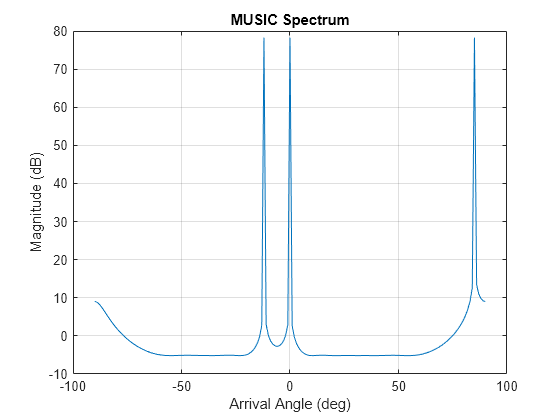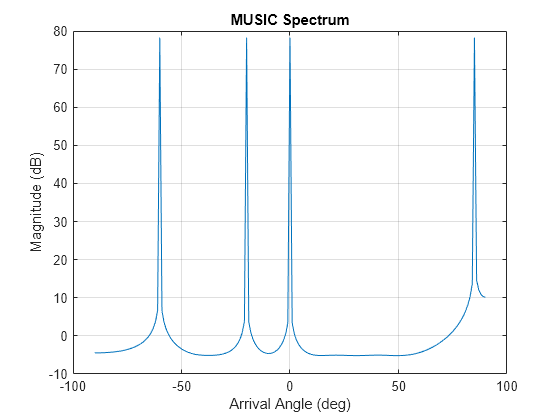musicdoa
Estimate arrival directions of signals using MUSIC
Syntax
Description
doas = musicdoa(covmat,nsig)doas, of nsig plane
waves received on a uniform linear array (ULA). The argument covmat is
a positive-definite Hermitian matrix representing the sensor covariance
matrix. Detected sources appear as peaks in the spatial spectrum.
The argument nsig is the number of arriving signals.
Sensor elements are spaced one-half wavelength apart in units of wavelengths.
The function forces exact conjugate symmetry of covmat by
averaging the covariance matrix with its conjugate transpose.
Examples
Input Arguments
Output Arguments
Extended Capabilities
Version History
Introduced in R2016b


